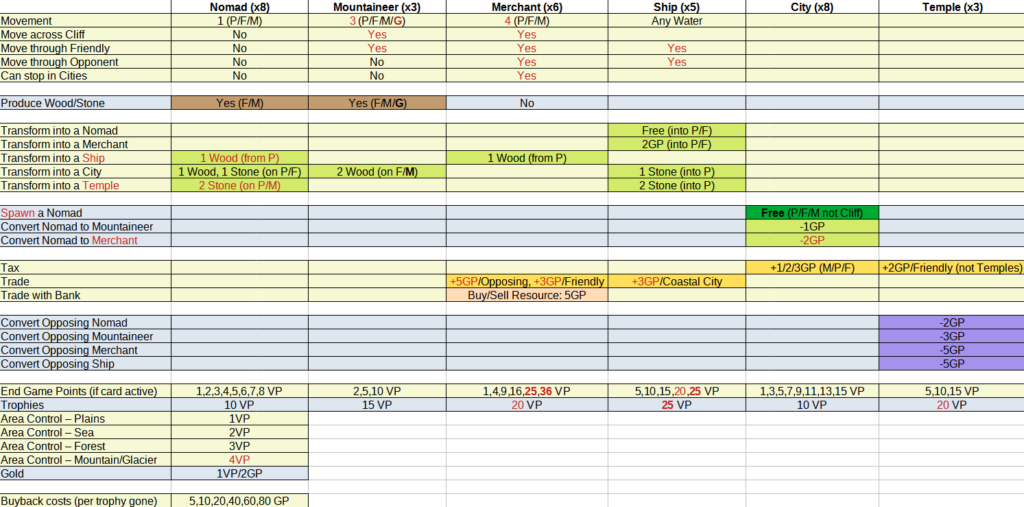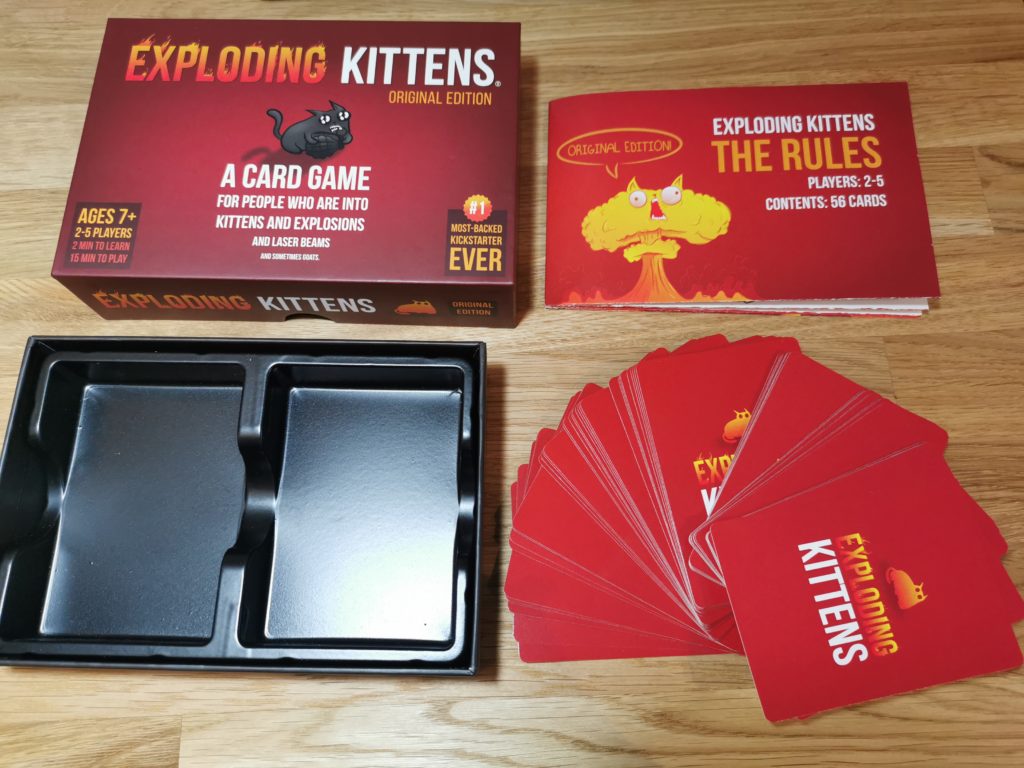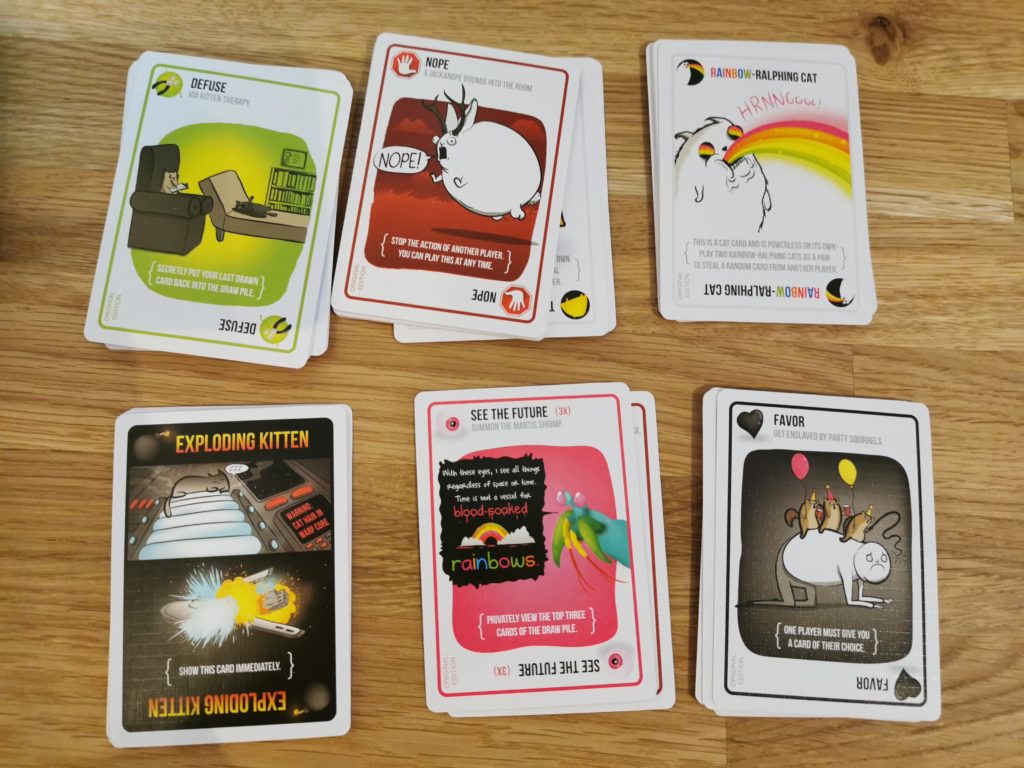Game
- setup
- builds a map – pay attention as starting location choice is critical
- place 1 city, 1 ship, 1 nomad
- turn
- everyone place a card face down, reveal it simultaneously
- go round in turn order doing an action for each piece on the board that matches your card
- end of turn
- Decline – dicard a card for each trophy won during the round
- Decline buy back – cost shown on Trophy Board – limit of 1 buy back per round
- if you’re out of cards pick up your dicard pile, advance first player token
During Play

- limit of 5 wood, 5 stone per player
- Get a trophy for placing all units of a particular type
- Triggers a 1 card Decline at end of round from each player
- As your unit types join/leave the game add/remove their corresponding card to/from your hand
Gain Points From
- Area control (most units in an area – draws are lost)
- Plains – 1VP
- Sea – 2VP
- Forest – 3VP
- Mountain – 4VP (includes glacier in area)
- Each Active card (not reserve/decline)
- Score for number of pieces in play
- 1VP for each 2GP
- Trophies
Tips
- Keep enough money to buy cards out of decline – 2 trophies in 1 round can wipe a player out of the game
- Starting position tips
- spread out
- aim for wood/stone
- avoid neighbours (avoid being fenced in)
- look for areas to monopolise that others won’t get to easily (on edges surrounded by cliffs/glaciers)
- Early on quick expansion: nomads to cities to spawn nomads
- has risk of no money to buy cards out of decline
- City spawning nomad is the main way to add pieces to the board (only other way is temple converting enemy)
- Leave spawned nomads by their spawning city to immediately convert to Merchant/Mountaineer
- Mountaineer not that useful – only needed for traversing ice/ice mining – only converts out to a city
- To spread out across water:
- coastal city -> spawn nomad -> convert to ship -> travel away -> create coastal city/temple
- To spread out across land:
- coastal city -> spawn nomad -> convert to merchant -> travel away -> convert to ship -> optional travel away -> create coastal city/temple
- Get a merchant in a nest of cities for big trade income
- Get multiple ships in water with many coastal cities for big trade income
- Early focus should be on getting cities out
- Early game strategy, quick expansion, get 5 ships out:
- turns 1, 2, 3: city spawn, nomads produce, boat to city
- turns 4,5: city spawn, nomads produce, nomad to city
- turns 6,7,8: city spawn, nomads produce, nomad to city, nomad to ship, ships trade
- turns 9,10: city spawn, nomads produce, nomad to city, nomads to ship


